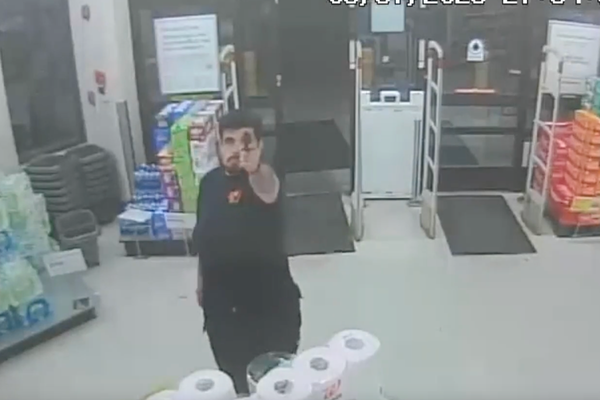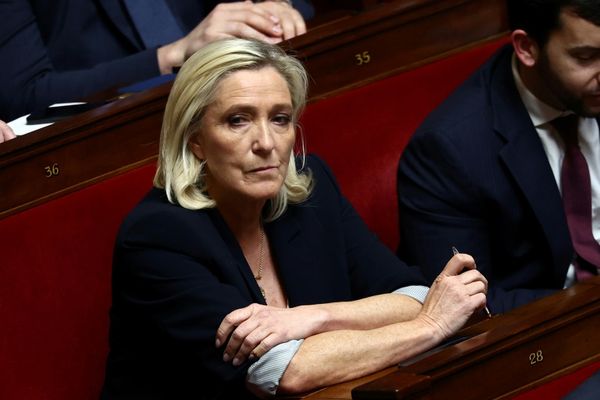
The tunnel at Whiskey 108 – and whether there were any people hiding in it – continues to dominate and divide the Ben Roberts-Smith defamation trial, with an SAS soldier accusing a comrade of cowardice over a raid on the compound in the Afghan village of Kakarak.
At issue is whether two men killed in the compound in April 2009, were pulled from the tunnel and murdered by Australian troops, or were insurgents lawfully killed in a firefight.
The argument has split the Australian SAS troops who were there: Roberts-Smith and five other soldiers have said there were no men in the tunnel. A further five have said there were men pulled from the tunnel.
Another soldier, Person 4, who is alleged to have shot dead one of the men on Roberts-Smith’s orders, refused to testify on the grounds of self-incrimination.
Even members of the same patrol have come to court and given irreconcilable evidence.
Six members of one patrol have been subpoenaed to give evidence: they have split three-three over whether anybody ever came out of the tunnel.
The patrol commander, Person 29, has told the court in evidence for Roberts-Smith that there were no people discovered inside the tunnel.
He has been supported by two other members of that patrol – Person 35 and Person 38, who gave evidence for Roberts-Smith on Wednesday.
Asked if he had seen any “fighting-aged males” come out of the tunnel at Whiskey 108, Person 38 told the court: “I did not.”
But three other members of the patrol, Person 42, Person 41 and Person 40, all giving evidence as part of the newspapers’ defence, have said two unarmed men – one elderly, the other with a prosthetic leg – were discovered inside the tunnel and were taken into custody by Australian troops.
In his testimony, Person 41 said Roberts-Smith and Person 4 had borrowed his suppressor before Roberts-Smith forced the elderly man into a kneeling position. “RS pointed to the Afghan and said to Person 4 ‘shoot him’,” Person 41 told the court.
Person 41 told the court he stepped through a door so as not to witness the alleged killing, but heard a muffled shot fired, and returned to see Person 4 standing above the man’s body.
Person 41 testified he later saw Roberts-Smith “frog-march” the man with the prosthetic leg outside the compound, before throwing him to the ground and shooting him with a machine gun.
Roberts-Smith, a Victoria Cross recipient, is suing the Age, the Sydney Morning Herald and the Canberra Times for defamation over a series of reports he alleges are defamatory and portray him as committing war crimes, including murder.
The newspapers are pleading a defence of truth. Roberts-Smith denies any wrongdoing.
It is not disputed that at least two Afghan men were killed by Australian SAS troops during their raid on Whiskey 108 in the late afternoon of 12 April 2009.
In their defence, the newspapers claim two men were discovered hiding inside the tunnel. The men submitted to the Australian troops and were taken into custody.
The elderly man was allegedly shot dead in the compound by an Australian soldier, Person 4, on the orders of Roberts-Smith and his patrol commander.
The second man was alleged to have been marched outside by Roberts-Smith and machine-gunned to death.
Roberts-Smith denies either killing happened as alleged, and argues they could not have, because there was never anybody in the tunnel. Four times during his evidence to court, he told Justice Anthony Besanko “there were no men in the tunnel”, or “there were no people in the tunnel”.
Roberts-Smith said he shot and killed the man with a prosthetic leg, whom he discovered running and armed, outside the compound. The man was an insurgent, lawfully killed within the laws of war, Roberts-Smith said
The elderly man, according to Roberts-Smith, was killed outside the compound by another Australian soldier, unknown to him, but whom he credits with saving his life.
Person 38, giving evidence for Roberts-Smith Wednesday about the Whiskey 108 raid, told the court that after the tunnel was discovered, he “cleared” – swept for insurgents and weapons and then rendered safe – a nearby orchard with his patrol-mate Person 41.
This evidence, he conceded, was not part of his outline of evidence provided to the court.
Person 38 said he remembered clearing the orchard because he had initially asked another patrol-mate, Person 40, to clear the orchard with him, but that Person 40 refused.
“Person 40 did not want to clear that orchard with me for reasons of courage. And Person 41 to his credit, took his place and cleared that orchard with me,” Person 38 told the court.
Testimony about Person 41’s movements are critical because of his evidence to the court about being asked for his suppressor – then allegedly used in the killing of the elderly man – and his eyewitness account of seeing the man with the prosthetic leg murdered.
Nicholas Owens SC, for the newspapers, put it to Person 38 he had fabricated the orchard story in order to bolster Roberts-Smith’s version of events.
“That is incorrect,” Person 38 replied.
Owens asked Person 38 why, if the orchard story was true, he had not included it in his outline of evidence.
Person 38 said it wasn’t “pivotal”.
“I’ve been subpoenaed to come here and tell the truth,” he said. “It’s not in my outline of evidence, but it’s the truth.”
Owens put it to Person 38 he had “never told anyone before today” about clearing the orchard and had “only invented this story” after Person 41 had given evidence about both alleged executions, in order to place Person 41 elsewhere in the compound.
“That’s not correct,” Person 38 said. “I cleared that orchard with Person 41.”
Person 38 remains in the witness box under cross-examination.
• This article was amended on 19 May 2022 to correct the number of patrol members who have given evidence. Six have done so, not five as a previous version of the story said.







